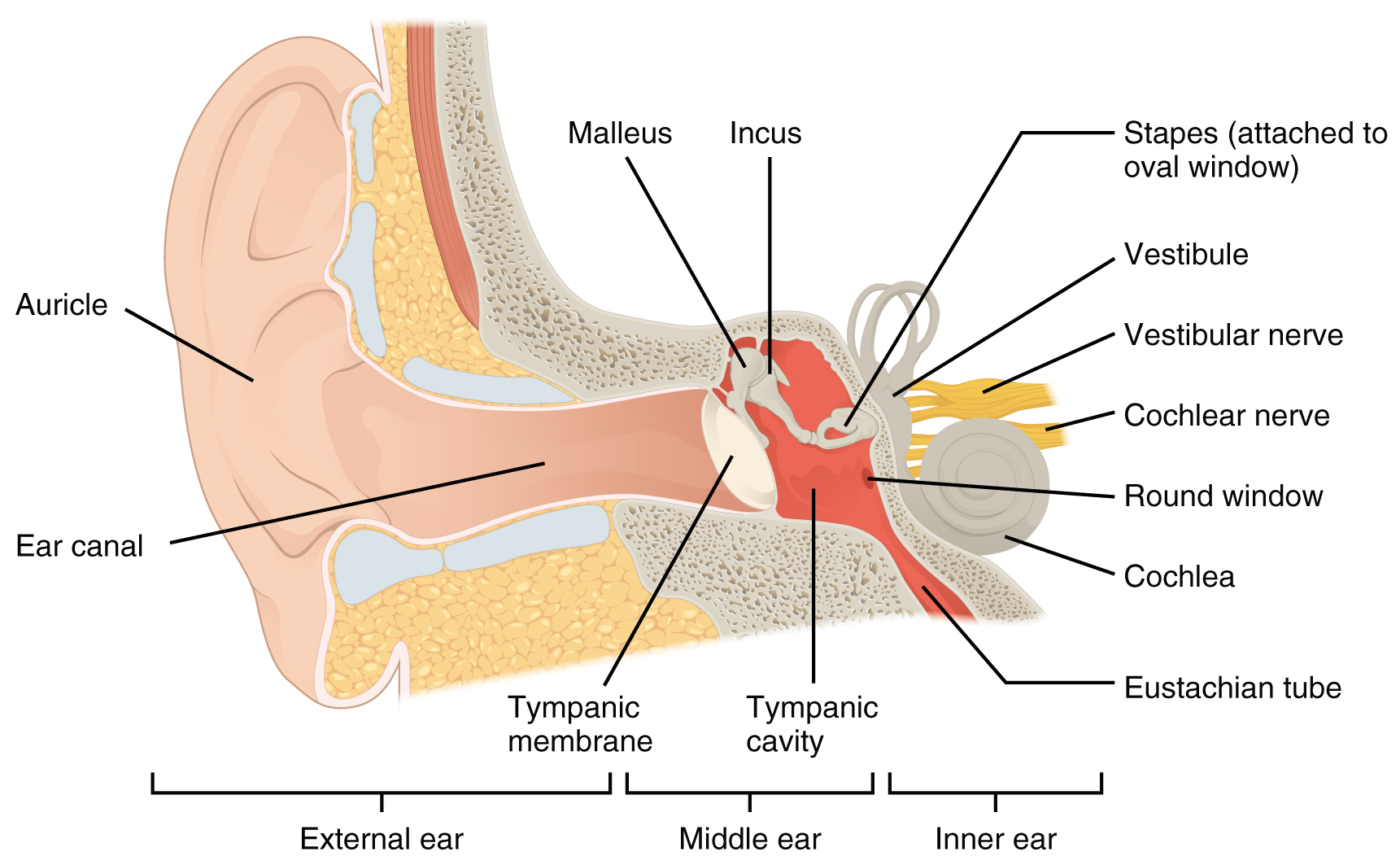Avoiding contact with other children who are unwell may also help reduce your child’s chances of catching an infection that could lead to a middle ear infection.
Ear infections
Anyone can develop an ear infection, though they are particularly common in babies and small children. Otitis media is the term for a middle ear infection, the most common form of ear infection, which causes inflammation and a build-up of fluid behind the eardrum.
Causes
Most middle ear infections occur when an infection, such as a cold, causes a build-up of mucus in the middle ear. The Eustachian tube (a thin tube that runs from the middle ear to the back of the nose) then becomes swollen or blocked, causing earaches and associated symptoms.
Children are more likely than adults to get ear infections as their immune systems are not fully developed, and their ears do not drain fluid/mucus as effectively due to a smaller Eustachian tube.
The majority of ear infections are caused by viruses, which cannot be treated with antibiotics. The body usually fights the virus naturally and signs of infection disappear within three days.
Certain conditions can also increase the risk of otitis media, including:
- having a cleft palate- a birth defect where a child has a split in the roof of their mouth
- having Down’s syndrome- a genetic condition that has a characteristic range of physical features and usually causes some level of learning disability
Signs and Symptoms
- earache
- pulling, tugging or rubbing at their ear
irritability - restlessness at night
- a high temperature (fever)
- difficulty feeding, and nausea
- a lack of energy
- slight hearing loss- when the middle ear is filled with fluid it can go on to produce glue ear (also known as otitis media with effusion)
- unresponsiveness to quiet sounds or other signs of difficulty hearing, such as inattentiveness
- loss of balance
Treatment
Most ear infections will not require any specific treatment, and disappear on their own after a few days. When necessary, paracetamol or ibuprofen may be used to relieve pain and a high temperature.
Visiting the GP would be necessary if a child has:
- symptoms that show no sign of improvement after a few days a lot of pain
- discharge of pus or fluid coming from the ear
- an underlying health condition, such as cystic fibrosis, which could make complications more likely
Prevention
It may not always be possible to prevent middle ear infections, but there are some steps to be taken that may reduce a child’s risk of developing them. These include:
- ensuring each child is up-to-date with their routine vaccinations- particularly the pneumococcal vaccine and the 6-in-1 vaccine
- avoid exposing your child to smoky environments (passive smoking)
- ensuring your child does not use a dummy once they’re older than six to 12 months old
- do not feed your child while they are lying flat on their back
- when possible, feed your baby with breast milk rather than formula milk


